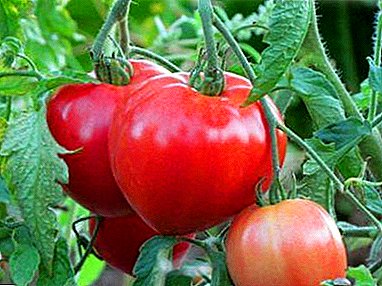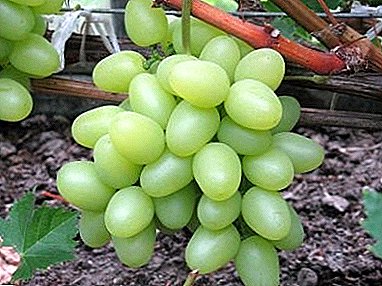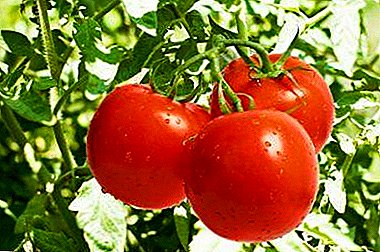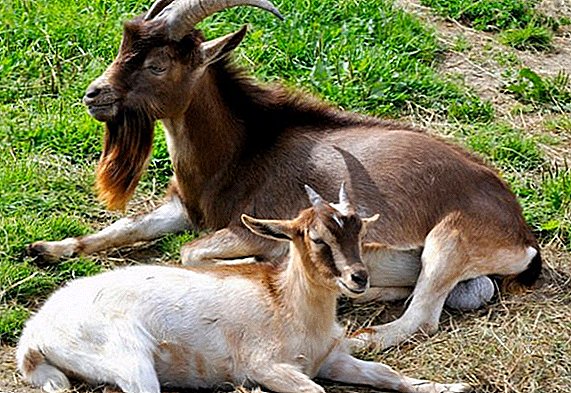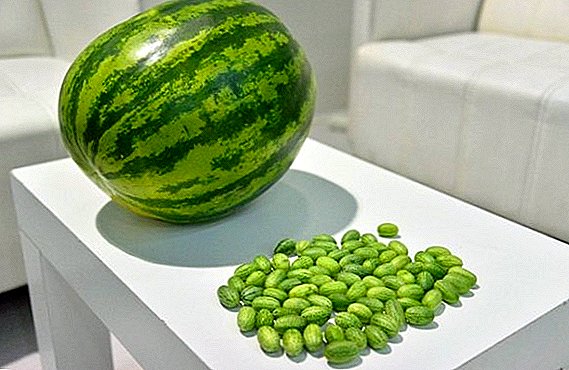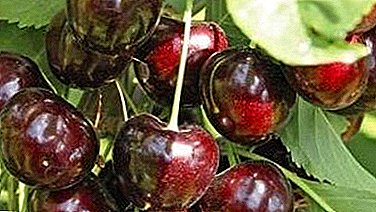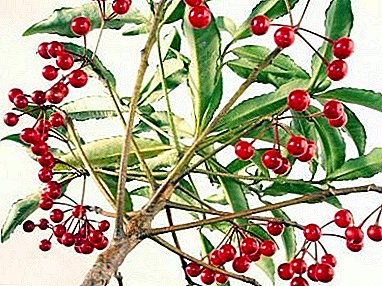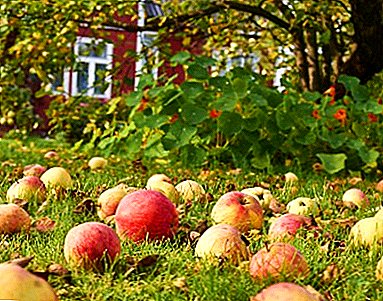
The first apple trees in Siberia began to grow 150 years ago.
Although before that there were apple orchards, for example, a garden planted by the Decembrists in Yalutorovsk.
But in the mass order of such plantings were not, and therefore, after many failures on acclimatization, conducted mainly by amateurs, scientific work began on the cultivation of frost-resistant varieties.
Over the years, created many varieties zoned for Siberia and successfully growing throughout the country.
These varieties include apple Daughter of Pepinchik.
She, like many dwarfs and half-dwarfs, begins to bear fruit in the fourth year after landing.
What kind is it?
 Winter apples, time to eat is September; fruits are stored under the right conditions until the beginning of March.
Winter apples, time to eat is September; fruits are stored under the right conditions until the beginning of March.
For storage, wooden containers (boxes, barrels) or vines (baskets, boxes) are used; they are stored at a low positive temperature in the closet or cellar, separate from other fruits and vegetables.
The air should not be dry, but an excess of moisture can cause mold.
Winter varieties also include: Idared, Golden Delicious, Granny Smith, Wintergushka and Antey.
Pollination
This apple tree is better to plant next to varieties such as Zhivinka, Alyonushka, Flashlight, Girlfriend, Youth.
They pollinate it. With the right neighborhood, the crop increases significantly.
Variety Description Daughter Pepinchika
Half-dwarfs are small trees, from which it is convenient to collect apples that can be planted much closer to each other, approximately at a distance of 2 meters.
This is a half-dwarf with a medium-thick crown., round and medium sized leaves. Blooms cream flowers. Young shoots arc-shaped.
 Small apple weighing from 15 to 20 grams, rounded.
Small apple weighing from 15 to 20 grams, rounded.
With a characteristic "seam" on the side.
Striped, brick-red, with red veins.
Fine-grained flesh is creamy, juicy, sweet-sour, with a spicy aftertaste.
The great taste of apples also differ varieties: Orlovsky pioneer, Orlinka, Ekranny, Big Folk and Aromatny.
Breeding history
The variety was bred at an experimental breeding station near Krasnoyarsk.
To obtain a variety, Polynyarsky Pepinchik was pollinated with a mixture of pollen varieties. Girlfriend, Tungus, Yellow pouring, Flashlight.
Hence the name of the variety - Daughter of Pepinchik.
A photo


Natural growth region
In addition to the Krasnoyarsk Territory (it is included in the register of varieties of the East-Siberian region), this variety of apple trees is successfully grown throughout Siberia, the Urals and the North-West of the European part of Russiadue to its high frost resistance, it can grow in any northern region, and in the southern regions too.
In these regions, apple varieties are successfully grown: Altynai, Gorno-Altai, Gornist, Altai Crimson and In Memory of a Warrior.
Yield
From one tree can remove up to 100 kilograms of apples. Enters the period of regular fruiting in the fourth year.
Planting and care
In order for the apple tree to grow well and successfully bear fruit, it must be properly planted.
 Traditionally we have apple trees in Russia often planted in the spring.
Traditionally we have apple trees in Russia often planted in the spring.
This is the most convenient time for the grade Daughter Pepinchik.
But sometimes the opportunity to buy the desired variety appears only in the fall.
In this case, you should try to plant an apple tree as early as possible, at least not later than the end of September, approximately one month before frost.
The main danger for such apple trees is close groundwater, so they should be planted at a high enough place, and if this is not possible, then closer to the ditches, where such water is partially diverted.
For young apple trees, close proximity with garden crops is useful, because working with vegetables: weeding, loosening, mulching, application of organic and mineral fertilizers, watering ─ useful and apple trees.
Therefore, in the first years after planting between apple trees need to arrange beds for vegetables and flowers.
Dig a square pit up to 60 cm deepIf possible, it is better to do this a week before planting the apple tree; compost, peat, humus are left at the bottom of the pit and left to lie out.
When planting, the apple tree is instilled so that the root collar is not buried, rising about five centimeters above the ground.
After planting the apple tree is watered, pouring about one tree five buckets of water.
If planting is carried out in the summer, then regular watering continues until August; about once every three weeks.
 In the spring, pruning is required, normalizing the harvest so that the apple tree does not break.
In the spring, pruning is required, normalizing the harvest so that the apple tree does not break.
For this remove old heavy branches, shorten the young, so the apple tree will get rid of the overload by the fruits.
Spring is produced top dressing with urea, both root, and spraying.
Under the tree you need to sow annual grass-green manure, and in the autumn to dig the earth together with these herbs, they will rot and serve as fertilizer for the apple tree.
In the summer, the apple tree is watered several times, often in dry years, about two times a week.
In dwarf and semi-dwarf apple trees, the root system is located close to the surface, so in the fall it should be covered for the winter.
Diseases and pests
This variety resistant to peststherefore, this is mainly about prevention.
It consists in spring treatments. Apple tree sprayed during the blooming of the kidneys Bordeaux 3% liquid and 4% urea.
You can use modern plant protection products, but this method of prevention is more environmentally friendly.
Apple orchards are often threatened by such harmful insects as the fruit sapwood, hawthorn, silkworms, mining moths and moths. How to deal with them, read the individual articles of our site.
Daughter Daughter Pipinchika fruitful, has excellent taste and is suitable for both storage and processing for jam, jam, for drying.
Watch the video about feeding and prevention of apple care.



